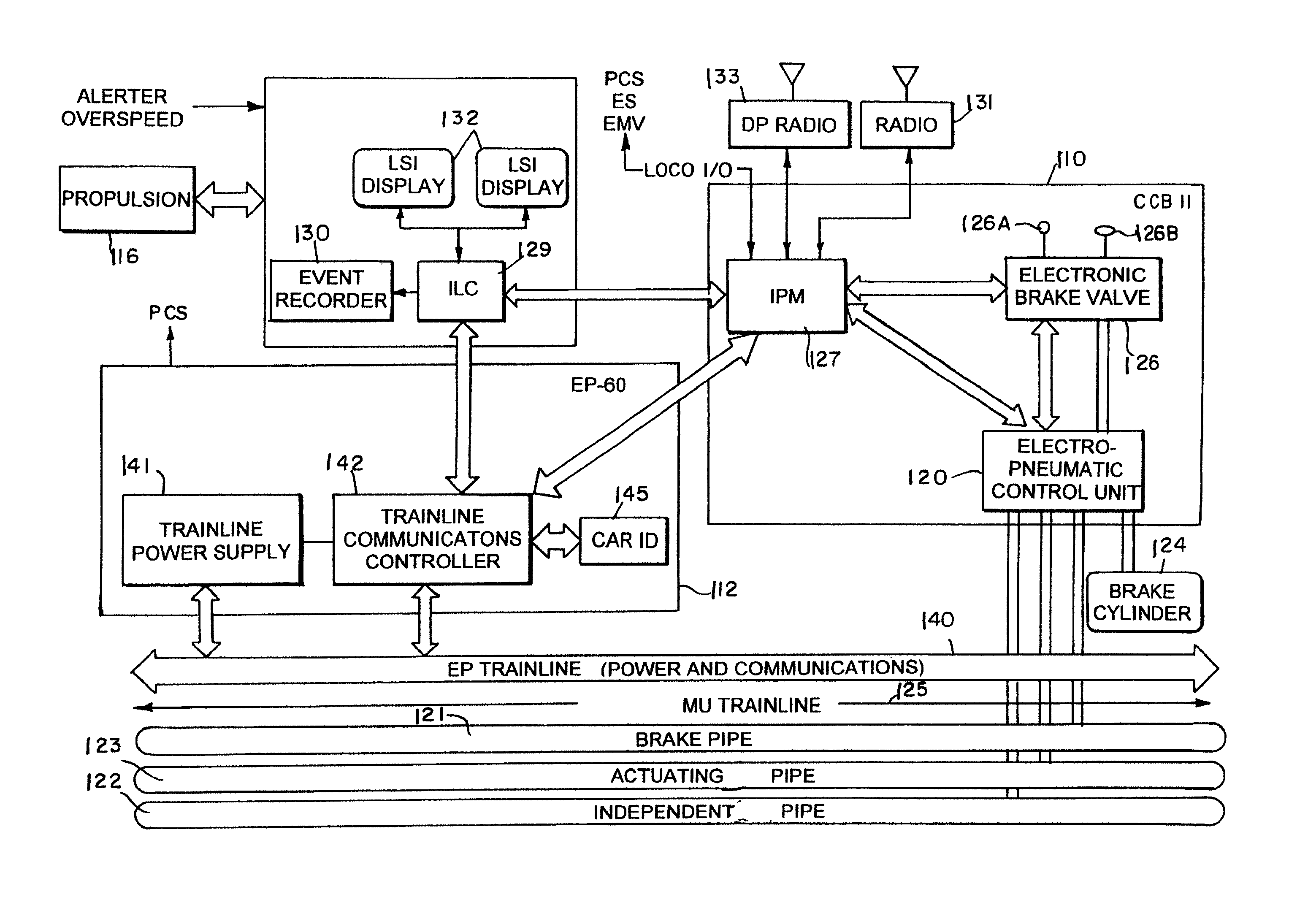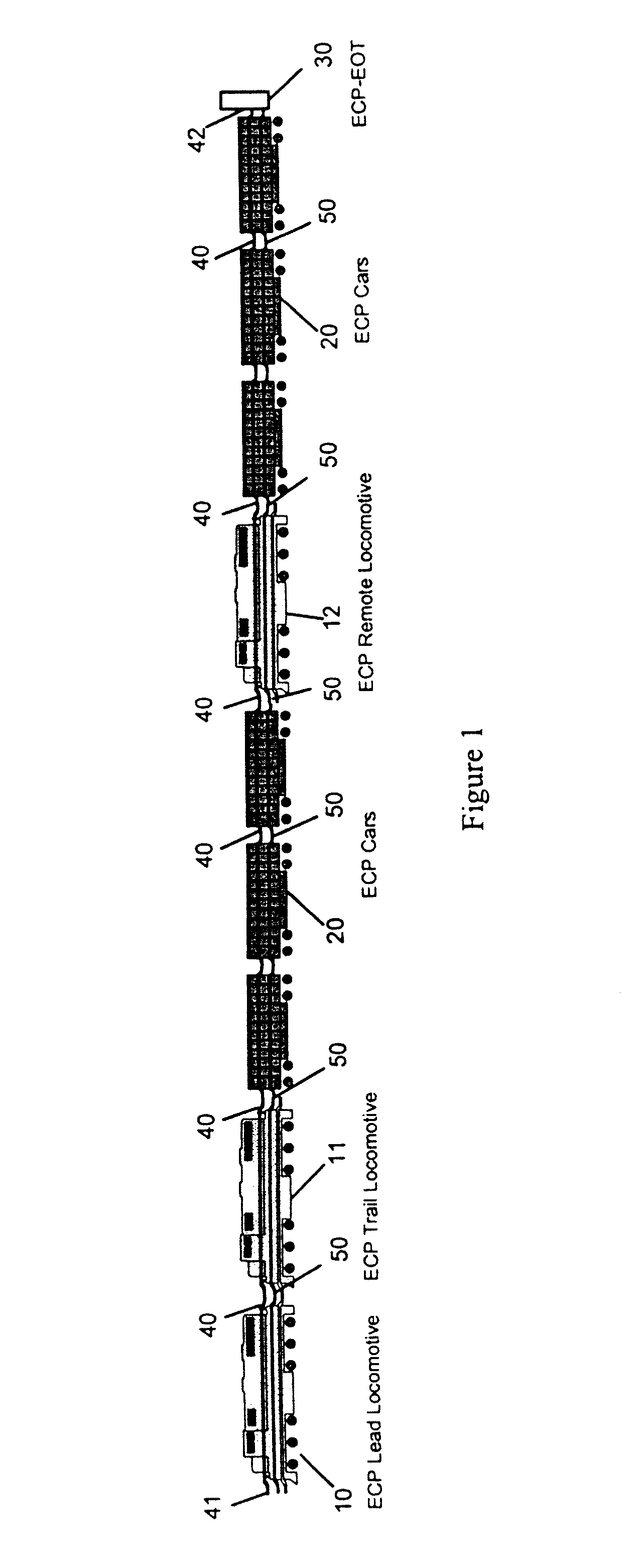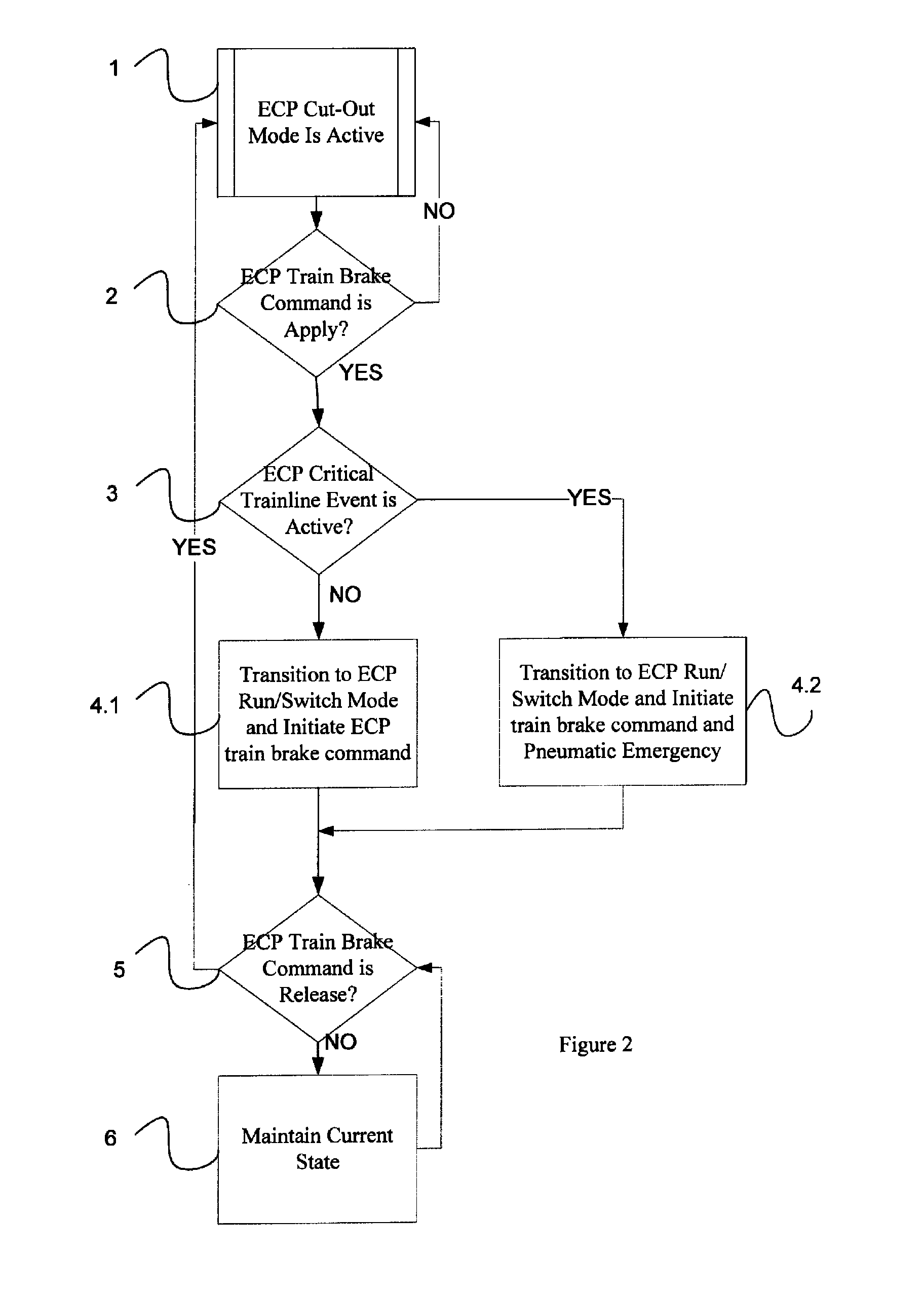ECP terminal mode operation
a terminal mode and brake system technology, applied in the direction of brake systems, process and machine control, instruments, etc., can solve the problems of new dilemmas in the process and the train system, and affecting the operation of the railroad
- Summary
- Abstract
- Description
- Claims
- Application Information
AI Technical Summary
Benefits of technology
Problems solved by technology
Method used
Image
Examples
Embodiment Construction
[0019]Referring to FIG. 1, an ECP train includes a lead locomotive 10 connected to a trail locomotive 11, to a remote locomotive 12 and rail cars 20 by an electrical train-line 40 and a pneumatic brake line 50. A head end train-line termination HETT 41 is provided on the head end unit HEU on the lead locomotive 10 and an end of train-line termination EOTT or ECP-EOT beacon 42 is provided at ECP end of train device (EOT) 30 on the last car.
[0020]Referring to FIG. 2, upon receipt of a train brake release command from the operator or equivalent at 5, the ECP system controller or head end unit HEU shall command the ECP brake control devices located within the train to cut-out mode or inactive state at 1. In the cut-out mode, the train brakes are released and ECP mode inactive state, which renders the electronic train brake control temporarily disabled. During this operating condition, the HEU will maintain train-line power to maintain battery charging to the ECP car control devices CCDs...
PUM
 Login to View More
Login to View More Abstract
Description
Claims
Application Information
 Login to View More
Login to View More - R&D
- Intellectual Property
- Life Sciences
- Materials
- Tech Scout
- Unparalleled Data Quality
- Higher Quality Content
- 60% Fewer Hallucinations
Browse by: Latest US Patents, China's latest patents, Technical Efficacy Thesaurus, Application Domain, Technology Topic, Popular Technical Reports.
© 2025 PatSnap. All rights reserved.Legal|Privacy policy|Modern Slavery Act Transparency Statement|Sitemap|About US| Contact US: help@patsnap.com



